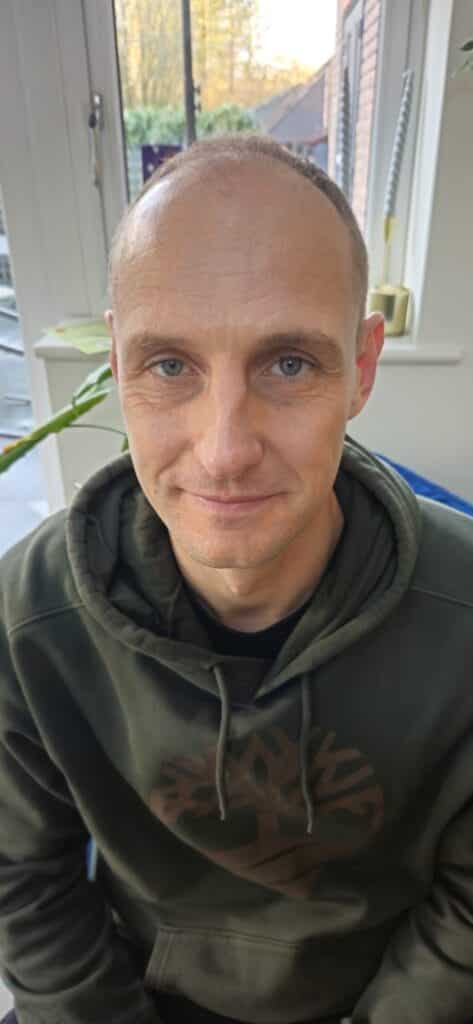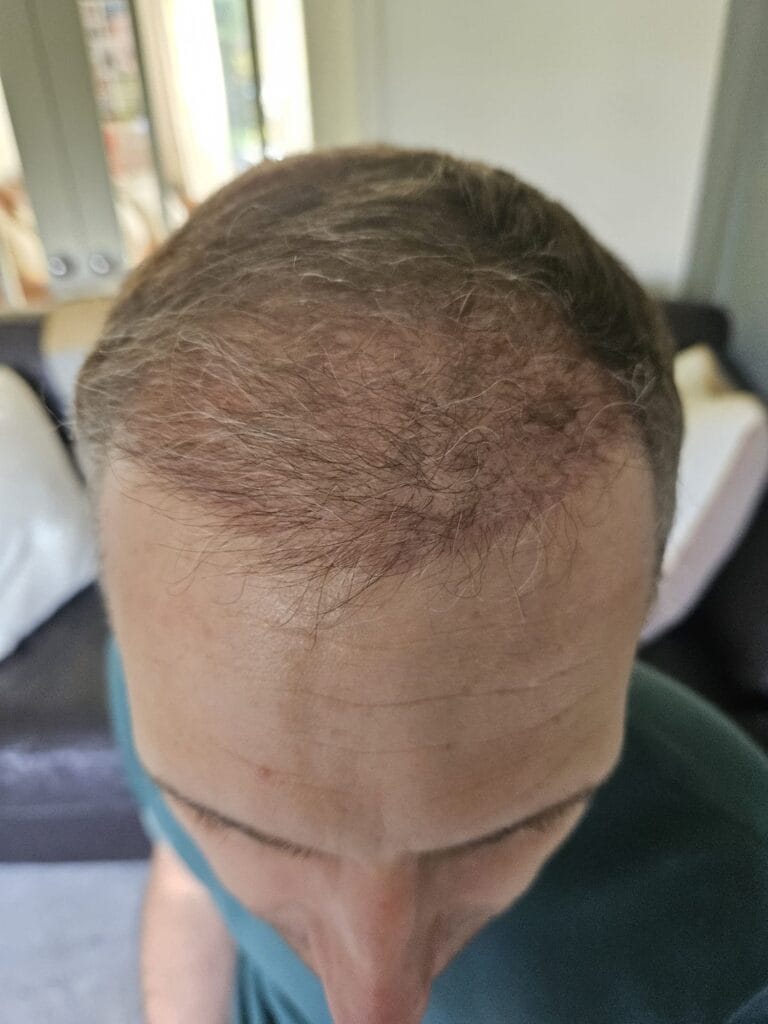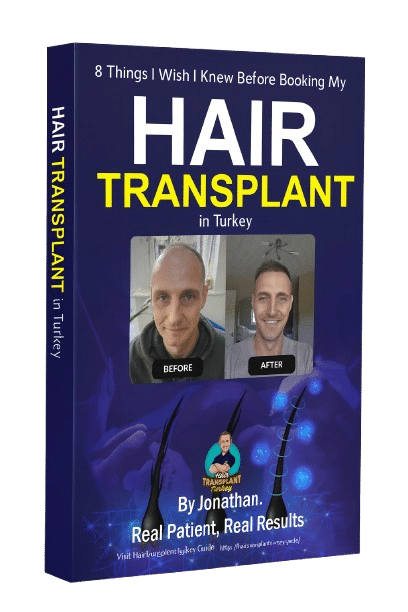When people start thinking about getting a hair transplant, they usually ask the same question I did for years: “But what does it actually feel like?”
In January 2025, I flew from the UK to Istanbul and had an FUE hair transplant at Clinicana, one of Turkey’s most reputable clinics. It was one of the best decisions I’ve ever made — but I completely understand the nerves that come before it.
So, in this article, I’ll walk you through how it feels before, during, and after an FUE procedure — both physically and emotionally. I’ll also reference some of the best medical sources (like the Mayo Clinic, ISHRS, and PubMed) to help you separate fact from myth.
If you’re considering a transplant yourself, don’t miss my free guide: 8 Things I Wish I Knew Before Booking My Hair Transplant in Turkey — it’s packed with honest insights to help you feel confident about your choice.
Before the Procedure: Nerves, Excitement, and Relief
For years, I put off getting a hair transplant. Like many people, I was worried about pain, cost, and whether I could trust a clinic abroad.
According to the International Society of Hair Restoration Surgery (ISHRS), patient confidence in FUE (Follicular Unit Extraction) has grown significantly in recent years — but emotional hesitation is still common. You’re not alone in feeling nervous.
When I finally decided to go ahead, the sense of relief was huge. I booked with Clinicana, which operates inside Acıbadem Taksim Hospital — a fully regulated medical facility. That helped me feel safe from the moment I arrived.
The night before surgery, I stayed at the included 4-star hotel, just a short walk from the clinic. I barely slept — part excitement, part anxiety — but there was comfort in knowing I’d taken the first real step to getting my confidence back.

The Morning of the Surgery: Calm Professionalism
Walking into the clinic that morning, I expected chaos or confusion. Instead, the process was seamless.
The medical team welcomed me, confirmed the details, and then the surgeon carefully designed my new hairline. Seeing that drawn on my scalp was an emotional moment — it was the first time I could picture what I might look like again.
The Mayo Clinic notes that this consultation phase is crucial for setting realistic expectations and ensuring your transplant looks natural. I definitely found that true.
After that, they shaved my donor area, applied antiseptic, and prepared me for anesthesia. I remember thinking, “This is it — no turning back now.”

The Anesthetic: Sharp Pinches, Then Nothing
Let’s be honest — yes, the local anesthetic does sting a little. It feels like a series of small pinpricks, similar to dental injections. But once the numbing takes effect, you don’t feel sharp pain again.
During the extraction phase, you’ll hear the buzzing of the micromotor as follicles are gently removed. It’s more a vibration than a sensation — slightly strange at first, but painless.
A PubMed study on FUE patient satisfaction found that 94% of patients reported “minimal to mild discomfort” during the procedure — which matches my experience exactly.
Once the anesthetic kicked in, I actually started to relax. I listened to music, chatted with the staff, and even dozed off for a few minutes during breaks.
The Surgery Itself: Long, Calm, and Surprisingly Peaceful
The full procedure lasted around seven hours, with breaks for food and stretching. The first half involved extracting the grafts from the back of my head; the second half focused on implanting them into the new hairline area.
Lying face down for hours can make your neck stiff, and toward the end you start to feel mentally tired. But the clinic staff kept me comfortable throughout — offering drinks, adjusting the pillow, and checking in regularly.
I’d describe the physical feeling as pressure and vibration, never pain. The emotional feeling, though, was powerful — somewhere between calm focus and disbelief that it was really happening.
Seeing Yourself Afterwards: A Mix of Shock and Joy
When they handed me the mirror at the end, I was stunned. My forehead was swollen, my scalp dotted with hundreds of tiny red grafts — but I could already see my new hairline. It looked real.
There’s a strange mix of shock and joy in that moment. You look slightly alien but also brand new.
The British Association of Dermatologists explains that swelling and redness are normal in the first 48 hours — and that’s exactly what I experienced.
Clinicana provided clear aftercare instructions, medications, and even a follow-up cleaning session the next day. The support via WhatsApp made me feel like I was never on my own.

The First Week: Healing and Impatience
The first night, sleeping upright is the hardest part. You need to keep your head elevated to avoid swelling, which means balancing pillows and trying not to roll over.
By Day 3, there was mild itching and tightness, but no real pain. Scabs formed and started to flake off naturally around Days 7–10 — just as Mayo Clinic guidance suggests for normal recovery time.
Emotionally, I felt impatient. I wanted to see results immediately, but FUE requires patience. Around the 2-week mark, some of the transplanted hairs shed — known as “shock loss.” It’s frustrating but completely normal.
The Following Months: Growth, Relief, and Confidence
By Month 3, I started noticing thin new hairs breaking through. It was subtle but exciting.
A PubMed clinical study notes that 10–80% of transplanted hair regrows within 3–4 months, and my results fit that timeline perfectly.
By Month 6, the density improved dramatically. I found myself brushing my hair differently, styling it, and actually enjoying the mirror again. The mental shift was incredible — my confidence shot up, and I felt like the “me” from years ago.

The Emotional Journey: From Fear to Gratitude
Looking back, the FUE process wasn’t just a physical procedure — it was an emotional transformation.
- Before the transplant: fear, hesitation, and self-doubt.
- During the procedure: calm acceptance and trust in the process.
- After recovery: gratitude and genuine happiness.
The discomfort fades within days, but the emotional payoff lasts for years.
The World Health Organization (WHO) advises that patients seeking medical procedures abroad should choose clinics operating under licensed medical supervision — something I can vouch for personally at Clinicana. That assurance played a big role in my peace of mind.

The Honest Truth About How It Feels
If you’re expecting unbearable pain or trauma, don’t. It’s nowhere near as bad as most people fear. The physical sensations are manageable, and the emotional reward is far greater than the discomfort.
Having an FUE hair transplant feels like reclaiming something you lost — not just your hair, but your confidence, youth, and sense of self.
If you want to dig deeper into what to expect, including how to avoid the mistakes I nearly made, download my free guide: 8 Things I Wish I Knew Before Booking My Hair Transplant in Turkey. It’s the exact resource I wish someone had given me before I flew out.
References
- Mayo Clinic – Hair Transplant Overview
- International Society of Hair Restoration Surgery (ISHRS) – Global Practice Survey
- PubMed – FUE Graft Survival and Patient Satisfaction Studies
- British Association of Dermatologists – Post-Operative Care Guidelines
- World Health Organization – Medical Tourism and Patient Safety Recommendations



 Continue with Google
Continue with Google